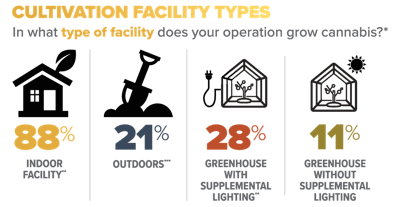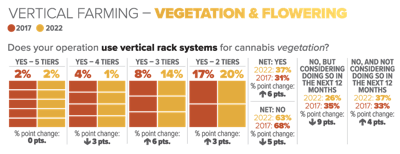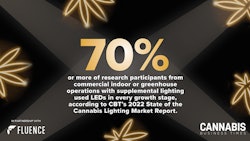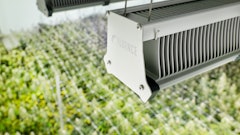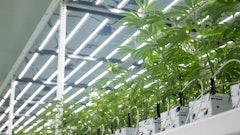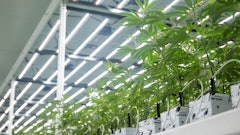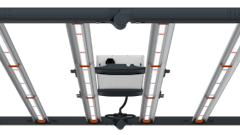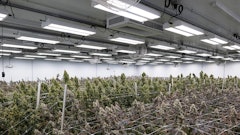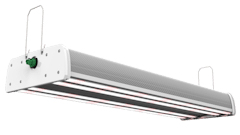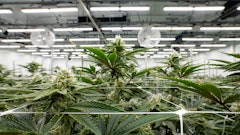As in past years, canopy footprints varied significantly for cultivation operations in the 2022 “State of the Cannabis Lighting Market” research. Last year’s study reported an average canopy size of 34,500 square feet. But averages prove tricky when extremes are involved—and cannabis facility size is a case of extremes. This year’s study highlights median canopy size instead, reflecting a middle value of 10,000 square feet of canopy.
This year, 88% of participants cultivate indoors under artificial lighting—up 9 percentage points from 2021. More than one-fourth (28%) cultivate in greenhouses under natural and supplemental lighting. One in five (22%) grow in facilities 50,000 square feet or more, while 13% cultivate canopies less than 1,000 square feet. One-third (33%) of commercial-grower participants also have hobby or personal-use grows.
Vertical farming comprises a significant segment of commercial indoor and greenhouse operations. For 2022, 37% of participants who use supplemental lighting reported using vertical rack systems for cannabis vegetation (not including propagation). That figure echoes 2021 and represents a 6 percentage-point increase from 2017, the first year this research addressed vertical systems. One-fifth (20%) of participants use two tiers for vegetation.
For flowering, 26% of research participants who cultivate with supplemental lighting use vertical racks—up 5 percentage points from last year and 13 percentage points from 2017. The largest segment (22%) grow in two tiers.

